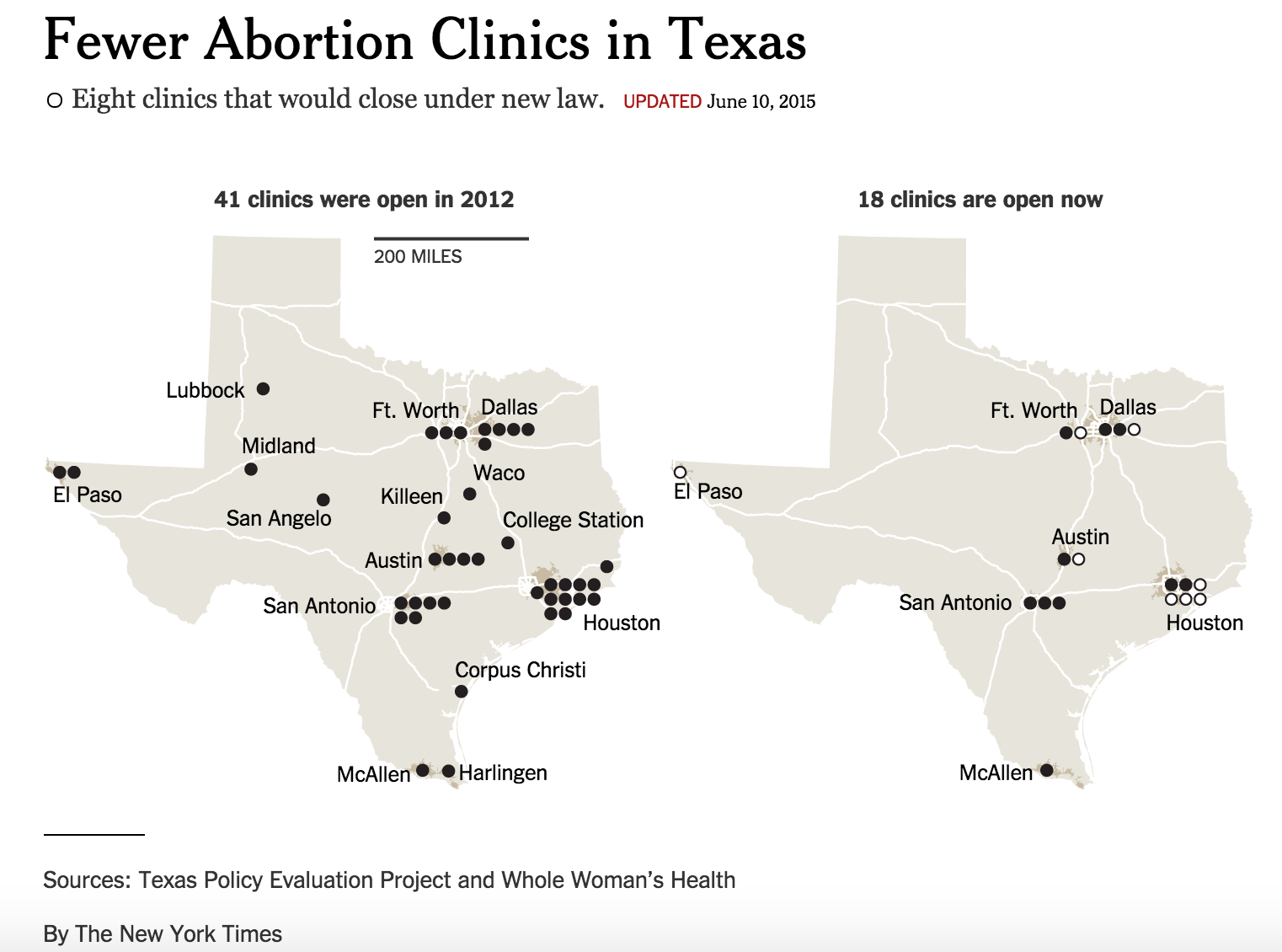A Massive Decision on Abortions Rights is Coming

By:
The U.S. Supreme Court (SCOTUS) agreed to hear challenges to a set of very strict abortion laws in Texas on Friday, according to the New York Times.
The laws took effect in 2013, when their strict operation requirements forced about half of the state’s 41 clinics that perform abortions to close, the New York Times reports. If the bill is put into full effect, it could result in the closure of a dozen more.
 The New York Times - nytimes.com
The New York Times - nytimes.com
Because opponents of the bill argued that it puts an unnecessary strain on abortion providers, SCOTUS issued a “stay” in June, saying that abortion providers could continue to operate while the court hears the argument, NPR reports.
ALSO: The Real Reason Why Women Get Abortions
Now, in what could be the first major abortion ruling in several years, SCOTUS will vote on whether or not the Texas law violates their 1992 decision in Planned Parenthood v. Casey, in which SCOTUS ruled that “states may not place undue burdens on the constitutional right to abortion before fetal viability.”
Here are three major factors to consider as SCOTUS gears up to vote on whether or not the Texas laws are constitutional.
1. Low-income women are disproportionately affected
If these laws are placed into full effect, nearly 1 million women in Texas will be at least 150 miles from the nearest abortion provider, according to NPR. This is majorly problematic for low-income women who may not have access to reliable transportation.
ALSO: #ShoutYourAbortion Is Tackling Abortion Stigma on Twitter
A low-income woman is five times as likely as an affluent women to have an unintended birth, the Brookings Institution reports. It is widely documented that unintended childbirth is associated with an increased level of poverty, a lack of familial stability, and lower quality of life for children. These are also issues that disproportionately affect women of color, according to the Guttmacher Institute.
When women are denied transportation and access, socioeconomic and racial inequality is further entrenched in American society.
2. Women will have abortions regardless of legality
Septic abortions, incomplete abortions, internal bleeding, death. These are some of countless side effects that occurred throughout the last century as women attempted to obtain “backyard” or “self-induced” abortions, according to the Guttmacher institute.
The actual number of illegal abortions in the 1950s and 1960s ranged from between 200,000 to 1.2 million per year, though it’s hard to tell the exact number since people were obtaining them in secret, the Guttmacher institute notes.
Roe v. Wade was established to guarantee women’s inherent right to privacy in deciding whether or not to have children. Anti-abortion proponents in Texas argue that these strict laws are to support the health of a woman, but the illegal abortions that occurred long before this new law was implemented had devastating side effects for women.
ALSO: WHAT YOU SHOULD KNOW ABOUT THE PLANNED PARENTHOOD CONTROVERSY
3. This ruling matters for 2016
Back in June, when SCOTUS announced the stay on Texas’ law, Mother Jones commented on the fact that SCOTUS will hand down a decision about whether or not these laws are constitutional smack dab in the middle of the 2016 election. So regardless of whether or not candidates want to discuss abortion in the coming months, now they have to.
